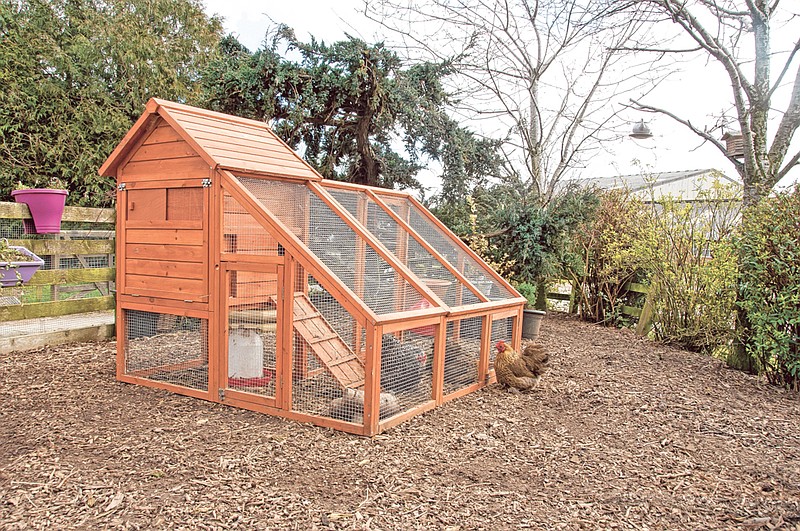With new residents moving to Walker County, officials are trying to determine which types of property to prioritize: agricultural, commercial or residential.
"We have a lot of new things that want to come into the county," Walker County Planning Commission Chairman Phillip Cantrell said at the top of the commission's work session Jan. 9. "More and more people are coming to our county."
The board met to discuss new regulations for where poultry houses can be placed on properties zoned either agricultural or residential. It was their first official discussion on the matter.
Commissioners said they want to establish setbacks to limit visibility of the structures from the road so as not to detract from the mostly rural county's residential opportunities, while finding a happy compromise with chicken owners.
The Census of Agriculture in 2017 reported 624 farms in Walker County, making up 90,761 acres of land. Poultry and egg products made about $140.6 million in sales that year.
The board determined they would recommend that poultry houses or live feed houses be 400 feet from the property line in all directions, or 250 feet from a neighbor's property if there is a 50-foot, live, growing border like bushes or trees.
Over 30 residents, many livestock farmers, attended the meeting, concerned their properties would be affected by the new regulation which would force many to move their poultry houses or feed lots.
Currently, Walker County allows poultry houses 60 feet from the road. If the neighboring property is also zoned agricultural, a poultry house can be within 15 feet of the property line, unless there's a house on the neighboring property. In that case, the chicken house must be 400 feet in all directions from the neighbor's house. A similar stipulation exists for agriculture-zoned property that abuts zoned residential: The poultry house must be 400 feet from the property line in all directions.
But requiring all poultry farmers to adhere to that setback - more than the length of a football field - led to a heated hour-and-a-half long discussion between the public and officials. The 250-foot-setback option was a compromise.
It was also recommended that all current poultry houses and feed lots be grandfathered in with the current setbacks.
"Walker County wants industry [to move here], but agriculture is already a major industry for the county," Walker County Farm Bureau President Mike Bunn said from the audience.
The meeting's agenda did not include a time for public comments.
The farmers in attendance also voiced concerns about when the time comes to further develop or expand their operations. Bunn said Walker County needs to think generationally in terms of farming.
"We have to look out for the future," he said.
Commissioner Kristi Bubrig said that the onus should fall on the person buying or developing land, saying that if someone doesn't want to live near cattle or poultry, they should do their research to ensure that doesn't happen.
Nationally, the average age of farmers hovers around 58. In Walker County, said Bunn, the average age is about 59, and it's imperative to encourage young people to continue this lifestyle.
With the commissioners in agreement on the proposed new setbacks, they will submit the new ordinance to the county attorney and to Sole County Commissioner Shannon Whitfield. He will have the final say, but will first host two readings of the ordinance and a related public hearing.
Many of the residents in attendance expressed frustration over the lack of opportunity for major input before the ordinance was drafted, and during an intermission, Bunn said privately that he had spoken to farmers who were raising new concerns.
"So far they listened, but they need more input," he said of officials. "We're going to have to hold on to those thoughts until the public hearings [with Whitfield]."
Email Sabrina Bodon at sbodon@timesfreepress.com.
